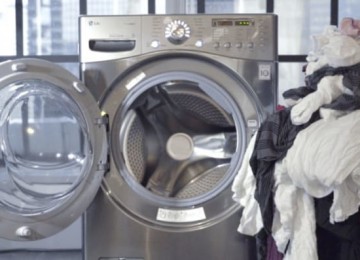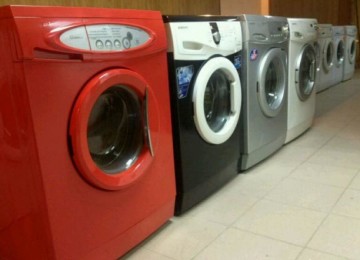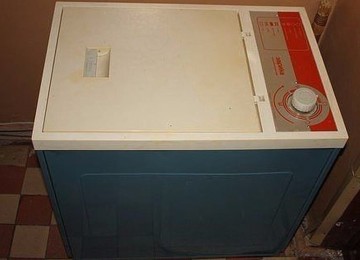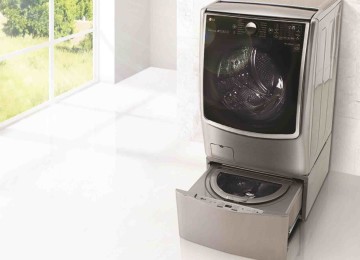 Washing machines were produced at the Riga Electromechanical Plant (Riga REZ) starting in the early fifties of the 20th century. The first mass-produced washing machines were the EAYA, EAYA-2 and EAYA-3 models. Hand assembly was used in their production. These washers were very popular, but their design was far from perfect. After modification, the Riga 54 washing machine was released, which became the very first washing machine in this series.
Washing machines were produced at the Riga Electromechanical Plant (Riga REZ) starting in the early fifties of the 20th century. The first mass-produced washing machines were the EAYA, EAYA-2 and EAYA-3 models. Hand assembly was used in their production. These washers were very popular, but their design was far from perfect. After modification, the Riga 54 washing machine was released, which became the very first washing machine in this series.
Riga 54
At one time it was possible to wash clothes with a dry weight of 2.5 kg. Engine power, demonstrated by this machine over a long period of operation, was equal to 250 watts. At peak load it could in some cases reach up to 450 watts.
During operation, the device that mixes the water performs reciprocating movements.
The washing machine body includes two cylindrical parts:
- top;
- bottom.
The latter houses the electric motor together with the gearbox, its suspension system and a water hose.
The upper part contains a centrifuge, which during washing rotates at a speed that can reach up to 800 revolutions per minute. There is also a stirrer and a special balancing device designed to ensure that vibration during operation is minimal.
The washing cycle could last no more than 6 minutes. To operate, it was necessary to pour hot water into the tank.Draining water could only be done manually.
This model used a centrifuge. In spin mode, the water was drained into a separate reservoir. It could be poured out after finishing the wash or refilled for subsequent treatment of the laundry.
The machine casing has three legs with wheels, thanks to which the washing machine can be easily moved if the need arises.
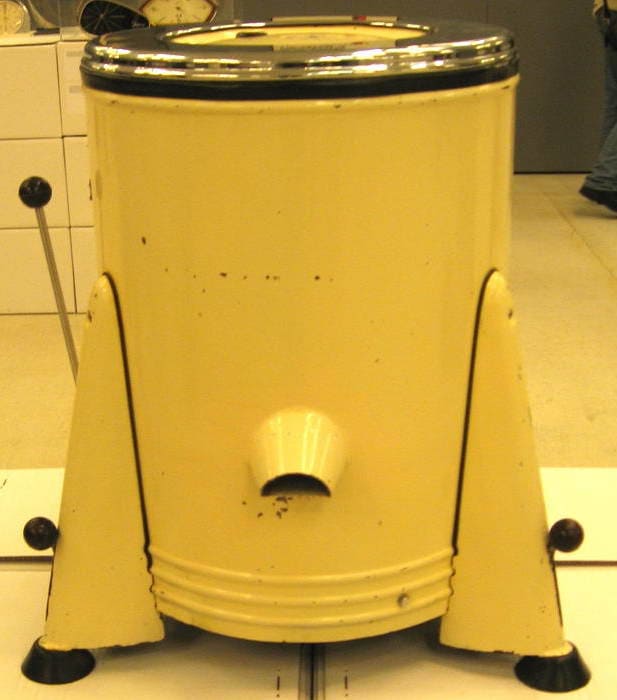
Riga 55
This model was an improved version of the previous model. It was practically a copy of the Swedish Husqvarna washing mashine.
The motor operated from a network with a voltage of 127 V.
Based on the Riga 55 model, the following were also developed:
- Riga 60;
- Riga 8;
- Riga 13;
- Riga 15;
- Riga 17.
Riga 60

This washer was a further improvement of the previous model. New in Riga 60 was the use of an improved spinning device. Here it was possible to adjust the distance between the rollers. In addition, compared to the previous model, they were 56 mm longer. Adjusting the distance made it possible to spin not only regular-sized laundry, but also fairly large ones.
Some characteristics of this model:
- The weight of the washing mashine was 30 kg.
- The height without the wringing device is 734 mm, and when it is installed it is 946 mm.
- Engine power equal to 150 W, he could use a 220 V or 127 V network.
You can wash 2 kg of laundry in one wash. Washing usually lasted from two to four minutes. After this, rinsing was performed. It took 1 - 2 minutes.
Riga 8
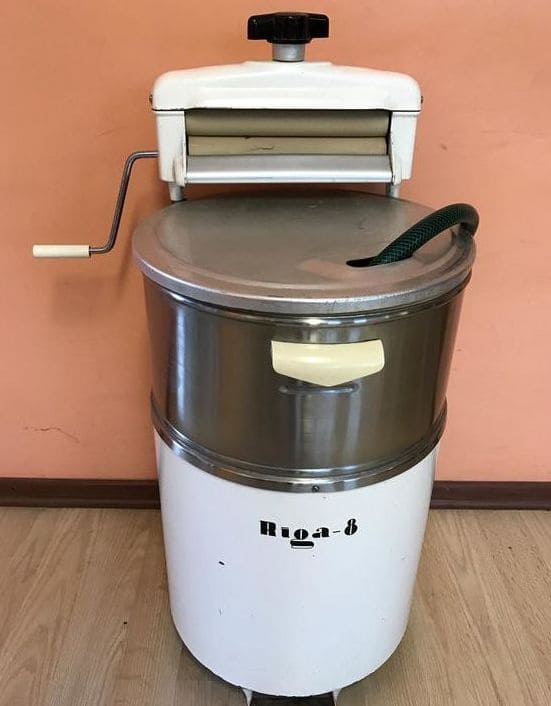
This model had an important advantage over its predecessors.It was equipped with a special pump to drain dirty water after washing.
This washer used a 350 W electric motor rated at 220 V and 50 Hz. There is a version of this washing machine that is designed for 127 V mains voltage. In this model, a timer was used to turn on, designed for a washing cycle of no more than 6 minutes. After the time allotted for washing has expired, the machine turns off.
However, such a model, from a modern point of view, had modest capabilities: in one washing cycle it was possible to process no more than one and a half kilograms of laundry. In this case, it is necessary to fill the machine tank with 30 liters of water.
An important advantage of the Riga 8 machine was that stainless steel was used to make the tank. This feature ensured the ability to operate the washing machine for several decades.
The height is 690 mm, and with a squeezing device - 920 mm.
Riga 13
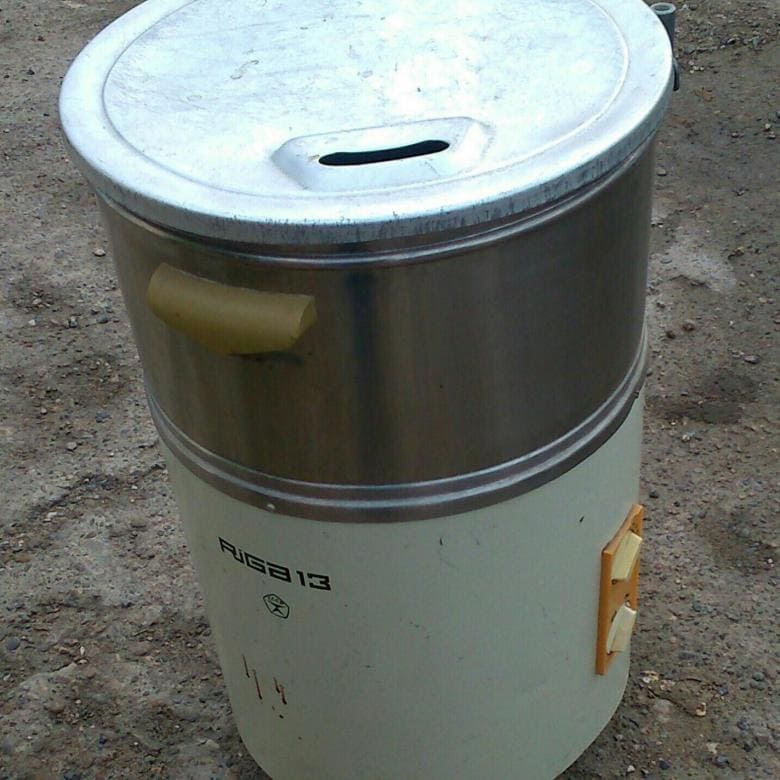
This model was practically no different from the previous one:
- You can wash up to 1.5 kg of laundry at a time.
- Water can be filled with no more than 30 liters.
- The weight of the machine excluding packaging is 25 kg.
- The height of the machine without installing an additional device is 690 mm, with it - 920 mm.
Scheme motor connections similar to how it was done in previous models.
It began to use a hose that pumps the soap solution flowing back from the tank. The designers who worked on this model decided that this improvement improves the washing effect.
The power of the electric motor in Riga 13 was equal to 180 W, while the number of revolutions per minute was 1425. The motor operated from a 220 V or 127 V power supply.
Riga 15
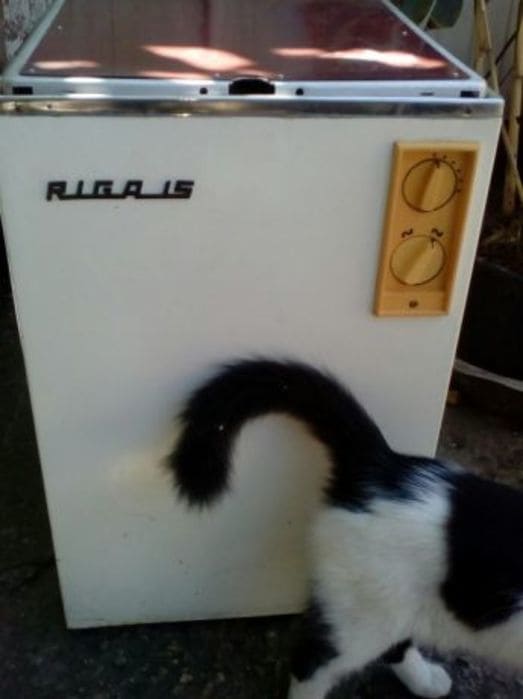
The tank, made of stainless steel, can hold up to one and a half kilograms of laundry. Washing occurs in the same way as in previous models in this series. A special centrifuge is used for spinning. Its time is 3 minutes.
Riga 17

In this model, the tank was made of stainless steel, just like in the previous model. The bottom was not located in a horizontal plane, but at an angle. It contained an activator, which, by means of rotation, mixed the water. One of the features of this model is the presence of two washing modes:
- soft;
- hard.
They differed from each other in the direction of rotation of the activator. The first of them was used for washing clothes made from more sensitive fabrics. The hard mode was used to process clothes made from coarser fabrics.
In the first case, the activator rotated clockwise, in the second - counterclockwise. The activator ribs are arranged in a spiral.
This model had an important improvement: an induction water heater was included in the design. It was not necessary to use cold water for refueling. The hostess could pour it and then heat it using the built-in device.
The use of this improvement had its significant drawback: heating water required high power consumption. When turned on, the required power was 2 kW, and with further operation it decreased to 1.2 kW.
Conclusion
The Riga REZ plant has practically created washing machine market in the Soviet Union, starting in the fifties of the 20th century. These machines required repairs relatively rarely. The designers managed to create a reliable and durable design, which some families continue to use to this day.






